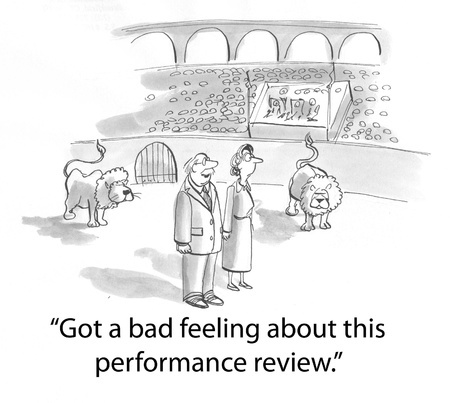Managing Employee Performance – Assessing Performance

Managing employee performance in the workplace is comprised of all of the interactions and activities that take place between an employer and an employee, that result in the achievement of goals and expectations.
This blog is part of a series focusing on the topic of “Managing Employee Performance”. The last blog offered insights into how to assess performance and provide employees with meaningful information on how they are doing. This blog will continue to explore the process of giving meaningful performance feedback.
Employee Assessment
The topic of assessment raises some very important questions that must be considered when thinking about effective management of employee performance. The questions are:
“How often do I assess employee performance?”
“How often do I share the assessment with the employee?”
“What approach should I take in order to effectively share my assessment with the employee?” (aka “How do I give them my feedback?”)
In the previous blog we concluded that assessments of employee performance take place on a continuing basis. When the performance assessment takes place, it is important for an employee to know where they are relative to where they’re supposed to be.
When the performance indicates that the employee is on target, then the manager should provide positive reinforcement to ensure the behavior continues. If an assessment of performance indicates that the employee is not on target, then the manager should provide corrective feedback to enable the employee to get back on course.
Although performance assessments take place on an ongoing basis, most managers are not able to spend all of their time constantly sharing feedback. So, we conclude that the answer to the second question is that a performance assessment should be shared with an employee anytime there is a behavior action that has a significant impact on the individual or the organization.
Land the Message
So, if we find good answers to the third question on our list: “What approach should I take in order to effectively share my assessment with the employee?” (aka “How do I give them my feedback?”), we will unlock one of the critical components of an effective performance management process. It’s not enough that a manager assess performance and share it with the employee – the ultimate goal of the exercise is to “land the message”.
Red Auerbach was a very effective coach in the national basketball Association. He was once quoted as saying: “It’s not what you tell your players that counts. It’s what they hear.” (Red Auerbach, Leadership Wired, Mar. 12, 2004). I believe this is a profound insight.
Did the Employee Hear the Right Message?
When talking with managers regarding the struggles they have with employees who don’t seem to respond to their feedback, I often hear managers defend their actions by explaining how many times they told the employee how to correct behavior. The problem with this explanation is that the manager is focusing on the wrong measure.
As a manager, rather than measuring how many times you said something to an employee, you should be measuring if the message was received and understood. “Landing the message” means that the employee has fully understood the message and the implications of taking action as a response to the message.
FEED the Message Recipient
When we accept that “landing the message” is the goal we are trying to achieve when sharing performance assessments, it can offer great insights into the type of approach needed to achieve this goal. An objective approach to “landing the message” is to “FEED” the message recipient. FEED is an acronym outlining the four steps to cover when offering an assessment of performance.
FACTS
Start with facts. Describe the situation and behaviours that you observed. If you didn’t directly observe the behaviours, be sure to confirm what really happened. An outline of the facts should always come before offering any judgment.
EXPECTATIONS
Review expectations. Expectations should have been outlined in a previous conversation and now is the time to revisit what was outlined. Our desire to offer a judgment can be shared as a transition between the discussion on expectations and effects.
For example, if a person did not wear the appropriate personal protective equipment required when on the job-site, you can cite that as a fact. After reviewing expectations (the requirement to wear PPE on the job-site) you can offer a judgment such as “the absence of PPE violated the safety policy and put yourself and others at risk”. This statement offers a transition into step 3.
EFFECTS
This step involves outlining the impact or “effects” of the actions taken. What difference does their action make to you, to co-workers, to the customer, to the organization or to them? It is very important to cover the effects of their actions as this is central to helping the person understand the importance of meeting expectations which will help “land the message” and motivate behaviour change.
DIALOGUE
Invite the other person to share their perspective. Engage in dialogue which involves an exchange of thoughts – not just a download. Adopt a mindset of curiosity rather than judgment. The other person may have information you are not aware of that could impact your assessment of what happened. If the person is not engaged in the conversation, the message may be at risk of not landing. A tell-tale sign that the person is disengaged is a response such as “yea, whatever”.
In summary, the approach taken when sharing feedback and assessing employee performance is critical to success. The key is to focus on an objective process that will enable you to “land the message”.
The next few blogs will offer further insights into landing the message and the importance of creating a motivating environment in order to help an employee succeed as part of an effective program for managing employee performance.
As always, I welcome your feedback. You can connect with me via email or telephone or leave a comment right here on the site.
Until next time,
Dave
David Town, CHRL, is a facilitator and coach of leadership and management principles that enable individuals and organizations to build greater leadership competency, resulting in higher performance and higher employee engagement. David has a particular focus on effectively managing conversations involving confrontation or conflict. As well, he provides insights and assessment strategies for integrating character competencies into leadership skills resulting in increased trust and reduced risk for leaders. David is a member of the International Coaching Federation and is President of Your Leadership Matters Inc.





Leave a Reply
Want to join the discussion?Feel free to contribute!